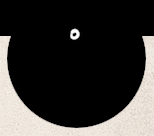
About the project:

The “Polina Raiko’s Seeds” project is a response to the collective trauma of the loss/destruction of a material cultural heritage site – Polina Rayko's house in Oleshky, Kherson region.
Oleshky is located on the left bank of the Dnieper River. Since February 2022, the town has been occupied by Russian army. On June 6, 2023, the Russians blew up the Kakhovka hydroelectric power station, causing large-scale flooding of villages and towns adjacent to the Dnieper. Polina Raiko's house, covered with paintings, was severely damaged, with more than 60% of the paintings destroyed by water, as the paintings were made on the clay plaster that covered the walls.

After the footage of the destroyed paintings appeared online, the Polina Raiko phenomenon became a topic of discussion not only in Ukraine but also in the world, but mostly as a heritage affected by the war. Of course, this is another crime of Russia against Ukrainian culture. However, it is unacceptable for us to talk about Polina Raiko and her house as a destroyed heritage only, because on the background of media resonance about the destroyed house and paintings, we may lose Polina Raiko once again. The trauma of the loss of material heritage should not destroy the living memory about the artist herself.
Polina Raiko transformed her tragic life experience into her art therapy practice (she started painting when she lost almost all of her loved ones and relatives). Therefore, although the heritage of grandma Raiko became well-known because of the war crime, we can talk about it not through trauma, but through the positive side of creativity, because this is exactly what Polina Raiko herself did: she created beauty through her own pain and tragedy. This gives her the right to be the personification of the vital and artistic strength of the Kherson region.
After the full-scale invasion of Russia to Ukraine, interest in Ukrainian naïve art has increased in Ukrainian society that proves naïve art potential to be one more point of restoring/reconquering our identity. On time to form new connections between artists and the unique universe of Polina Rayko, which definitely contains a kind of artistic code of the Ukrainian identity of the south.
Therefore, we consider it necessary not only to talk about Polina Raiko's heritage, but also to turn it into a phenomenon of living Ukrainian culture.
The project “Polina Raiko's seeds” aims to transform the bitter history of Polina Raiko's house into creative energy. We manifest that her artistic heritage was, is, and will be a living source of inspiration for us.

In March-April 2024, we developed and conducted online workshops for Ukrainian artists to generate ideas for practices that address Polina Raiko's heritage and ensure its “diffusion” into arts and creative industries.
The best ideas were collected in a sketchbook that is presented on this website.
Additionally, on this web-site we have collected existing artistic reflections on Polina Raiko's artwork, including visual art, exhibitions, fashion, craft and souvenir products, etc. We do this to visualize the impact of Polina Raiko on the cultural and artistic landscape of Ukraine and the world.



